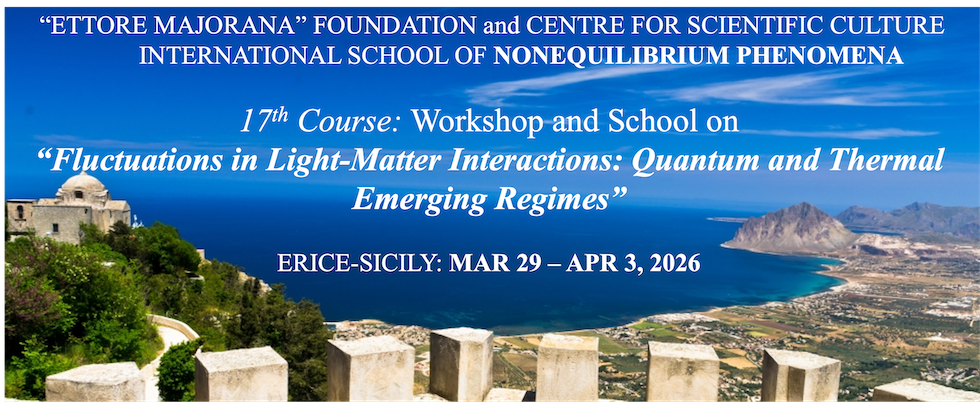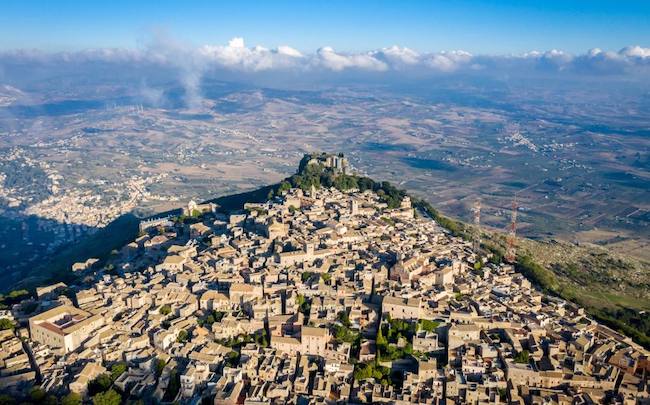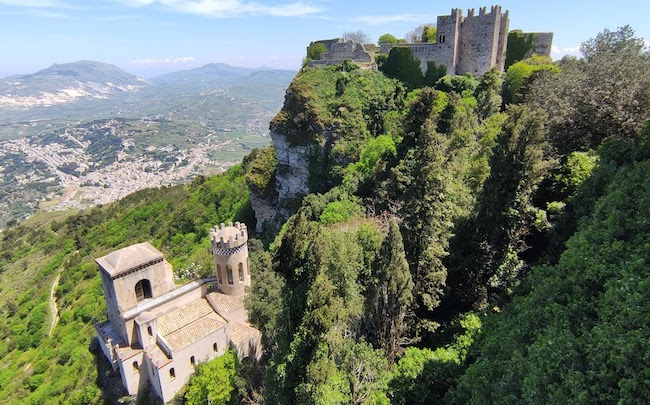
|
|
|
VenueAddress: ETTORE MAJORANA FOUNDATION AND CENTRE FOR SCIENTIFIC CULTURE Arrival day: Sunday, March 29, 2026 Departure day: Friday, April 3, 2026 The program includes four full days of conferences, school, scientific exchanges, discussions, and excursions to explore some of the most remarkable local attractions. Important Note: To ensure an enriching experience for all attendees and to make the best use of the limited spaces available, we kindly ask all participants to attend the entire event. The participants will be lodged in the hystorical structure lf the Majorana Center.
Some information According to legend, Erice, the son of Venus and Neptune, founded a small town atop a mountain (750 meters above sea level) over three thousand years ago. The renowned historian Thucydides (~500 B.C.), often regarded as the father of modern historical writing—characterized by its systematic and chronological approach devoid of mythical interpretations—referenced Erice in his account of the Trojan War (1183 B.C.). He wrote: "After the fall of Troy, some Trojans, fleeing the Achaeans, arrived in Sicily by boat. Settling near the Sicanians, they collectively became known as the Elymi. Their towns were Segesta and Erice." Inspired by this, Virgil later depicted the arrival of the Trojan royal family in Erice and the burial of Anchises by his son Aeneas on the coastline below the town. Many classical poets, including Homer (~1000 B.C.), Theocritus (~300 B.C.), Polybius (~200 B.C.), Virgil (~50 B.C.), and Horace (~20 B.C.), have praised this magnificent Sicilian site in their works. For seven centuries (13th–19th), Erice was governed by a local oligarchy whose wisdom fostered cultural and economic prosperity. This period saw the construction of numerous churches, monasteries, and private palaces, many of which still stand today. Visitors to Erice can admire the Castle of Venus, the ancient Cyclopean Walls (~800 B.C.), and the striking Gothic Cathedral (~1300 A.D.). The town itself is a remarkable blend of ancient and medieval architecture. Beyond Erice, other masterpieces of ancient civilization can be explored in the surrounding region. Motya (Phoenician), Segesta (Elymian), and Selinunte (Greek) each offer remarkable archaeological sites. The Aegadian Islands, where the decisive naval battle of the First Punic War (264–241 B.C.) took place, still hold traces of Neolithic and Paleolithic life, including the cave paintings and carvings of Levanzo and the grottoes of Favignana. For those seeking natural beauty, stunning beaches can be found at San Vito Lo Capo, Scopello, and Cornino, while Monte Cofano offers a rugged and dramatic coastline—all within an hour’s drive of Erice. For more information on the activities of the Ettore Majorana Foundation and Centre for Scientific Culture, please visit: http://www.ccsem.infn.it.
|




